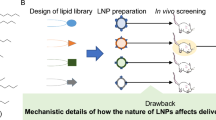Abstract
Lipofection, a lipid-mediated DNA transfection procedure, was used to transfect synchronized L929 mouse fibroblast cells with a reporter plasmid containing the bacterial chloramphenicol acetyltransferase gene. The efficiency of gene expression was investigated on transfection of cells at different stages of the cell cycle. Our data show that expression of the reporter gene was minimal when transfection was performed in G0-phase and parallel experimental data disproved the possibility that the reduced expression observed was due to differential uptake at different times in the cell cycle. Investigation into the condensation state of the plasmid has shown that the low chloramphenicol acetyltransferase gene expression could be a direct consequence of the packaging of the plasmid into condensed chromatin when transfection occurs in G0-phase. The inactivation of the reporter gene is not reversed by growth of the cells in high serum or by treatment with Trichostatin A, a specific inhibitor of histone deacetylase, suggesting that the inactive chromatin formed in G0-phase cells lacks associated histone acetylase activity. In contrast, the high activity seen when cells in S-phase are transfected is enhanced even further by treatment with Trichostatin A.
Similar content being viewed by others
References
Ledley FD (1995) Hum. Gene Ther. 6: 1129–1144
Boulikas T (1996) Int. J. Onc. 9: 1239–1251
Boulikas T. (1996) Gen. Ther. Mol. Biol. 1: 1–172
Boulikas T. (1996) Oncology reports 3: 1–7
Scheule RK & Cheng SH (1996) ‘Gene Therapy’ (Eds by Lemoine NR & Cooper DN) pp. 93–112. Bios Scientific Publishers
Yew NS, Wysokenski DM, Wang KX, Ziegler RJ, Marshall J, McNeilley D, Cherry M, Osburn W & Cheng SH (1997) Hum. Gene Ther. 8: 575–584
Dong J-Y, Wang D, van Ginkel FW, Pascrual D & Frizzell, RA (1996) Hum. Gen. Ther. 7: 319–331
Fink DJ, DeLuca NA, Goins WF & Glorioso JC (1996) Annu. Rev. Neurosci. 19: 256–287
Sanding V, Hofmann C, Steinert S, Jennings G, Schlag P & Strauss M (1996) Hum. Gene Ther. 7: 1937–1945
Feero WG, Rosemblat JD, Huard J, Watkins SC, Epperly M, Clemens PR, Kochanek S, Glorioso JC, Patridge TA & Hoffman, EP (1997) Hum. Gene Ther. 8: 371–380
Chu TH-T & Dornburg R (1995) J. Virol. 69: 2659–2663
Chu TH-T & Dornburg R (1997) J. Virol. 71: 720–725
Adams RLP (1993) In: ‘Cell Culture for Biochemists’ Eds by Burdon RH & van Knippenberg PH, pp. 142–146, Laboratory Techniques in Biochemistry and Molecular Biology Elsevier, Amsterdam.
Strain AJ, Wallace WAH & Wyllie AH (1985) Biochem. J. 225: 529–533
Goldstein S, Fordis CM & Howard B (1989) Nucl. Acids Res. 17: 3959–3971
Yorifuji T, Tsuruta S & Mikawa H (1989) FEBS Letter 245: 201–203
Takahashi M, Furukawa T, Nikkumi K, Aoki A, Nomoto N, Koike T, Moriyama Y, Shinada S & Shibata A (1991) Exp. Hematol. 19: 343–346
Zardo G, D'Erme M, Reale A, Strom R, Perilli M & Caiafa P (1997) Biochemistry 36: 7937–7943
Pelliciari C, Mangiarotti R, Bottone MG, Danova M & Wang E (1995) Cytometry 21: 329–337
Kass SU, Goddard JP & Adams RLP (1993) Mol. Cell. Biol. 13: 7372–7379
Caruso M, Martelli F, Giordano A & Felsani A (1993) Oncogene 8: 267–278
Seed B & Sheen J-Y (1998) Gene 67: 271–277
Felgner PL, Gader TR, Holm M, Roman R, Chan HW, Wenz M, Northrop JP, Ringold GM & Danielsen M (1987) Proc. Natl. Acad. Sci. USA 84: 7413–7417
Ferrari S, Calabretta B, Battini R, Cosenza SL, Owen TA, Soprano KJ & Baserga R (1988) Exp. Cell. Res. 17: 25–33
Turner BM (1991) J. Cell Sci. 99: 13–20
Bradbury EM (1992) BioEssays 14: 9–16
Lee DY, Hayes JJ, Pruss D Wolffe AP (1993) Cell 72: 73–84
Li W, Nagaraja S, Delcuve GP, Hendzel MJ Davie JR (1993) Biochem. J. 269: 737–744
O'Neill LP & Turner BM (1995) EMBO J. 14: 3946–3957.
Studitsky VM, Clark DJ & Felsenfeld G (1995) Cell 83: 19–27
Mattews HR & Waterborb JH (1985) ‘The Enzymology of Post-Traslational Modification of Proteins’, Vol. 2, pp. 125–185, Academic Press, London
Hendzel MJ, Delcuve GP & Davie JR (1991) J. Biol. Chem. 266: 21942–63
Hendzel MJ, Sun J, Chen H, Rattner JB & Davie JR (1994) J. Biol. Chem. 269: 22894–901
Yoshida M, Kijima M, Akita M & Beppu T (1990) J. Biol. Chem. 265: 17174–17179
Yoshida M, Horinouchi S & Beppu T (1995) BioEssays 17: 423–430
Gorman CM & Howard BH (1983) Nucleic Acids Res. 11: 7631–7648
Author information
Authors and Affiliations
Rights and permissions
About this article
Cite this article
Marenzi, S., Adams, R.L., Zardo, G. et al. Efficiency of expression of transfected genes depends on the cell cycle. Mol Biol Rep 26, 261–267 (1999). https://doi.org/10.1023/A:1007009022336
Issue Date:
DOI: https://doi.org/10.1023/A:1007009022336




